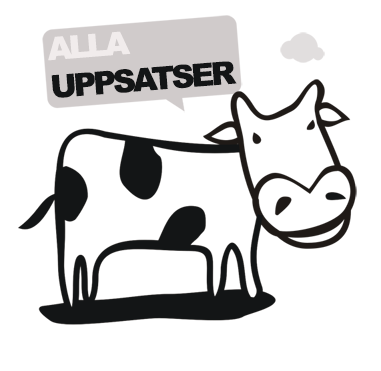
Sökresultat:
633 Uppsatser om Indirect greenhouse gas emissions - Sida 43 av 43
Vattenhantering och reglering för textilproducenter i Turkiet
Vatten är en av jordens livsviktiga resurser, en resurs som hela tiden minskar. I delar av världen råder akut vattenbrist och ofta återfinns industrier med hög vattenanvändning i områden med begränsad vattentillgång. En av dessa industrier är textilindustrin. Vid textil beredning är vattenförbrukningen mycket hög och avloppsvattnet är ofta mycket förorenat. Vattenfrågorna inom textil produktion har fram till idag inte uppmärksammats i lika stor grad som arbetsrätts- och kemikaliefrågorna.
Geosynteter för hållbara vägar : Modell för jämförelse av vägöverbyggnader med eller utan geotextiler och/eller geonät
The different material layers as part of a road construction fill all a function so theroad becomes durable, safe, comfortable and aesthetically pleasing. Recently, anew group of construction materials started to play an important role in roadconstruction ? geosynthetics.This thesis addresses the two most common types ofgeosynthetics used in modern road construction, namely geogrids and geotextiles.The most common use of geogrids is reinforcement of poor subgrade by usinggeogrid soil reinforcement, which occurs when road material particles wedge inthe geogrid?s mesh. Geotextiles act partly as a barrier that prevents the finermaterial in the below ground from being mixed with coarser upper material andalso act as a load spreader.Road contractors often face a choice of whether geogrids and/or geotextiles areappropriate in a particular road project and also how much profit the choice mightbring. This phase in the tender calculation process is the intended scope of thisthesis.The thesis deals with both the "hard" cost-function aspects and the "softer" values e.g.
Stureholm - en herrgårdsträdgårds historia, utveckling och framtida skötselmål :
Stureholm Manor and garden is a relatively young farming unit on clay soil in the north
western part of Skåne, a province in Southern Sweden. Since the middle of the 19th century
the landscape has been actively cultivated and has been transformed from oak forrest into
farmingland of high efficiency.
The industrial era during the 19th and 20th centuries meant new posssibilites for cultivation of
these clay soils. With equipment like steam ploughs and the possibility to obtain fertilizers,
the harvest increased considerably. This increased prosperity provided estate Stureholm with
a beatuiful corps de logi, a manor.
The trends prevailing in Europe around the turn of the century 1800-1900 against the growing
industrialism, was turned into a artisan movement known as Arts and Craft. The Swedish
followers idealized our Swedish history and they took the turn of a national romantic
movement that later turned into neoclassicism.